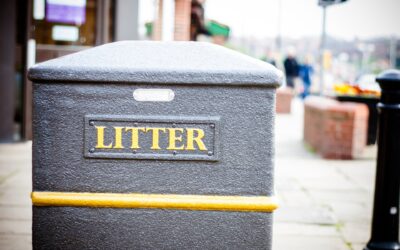Key Takeaways
Urbanisation is a global phenomenon with significant implications for transportation infrastructure.
Effective urban planning can lead to more sustainable, accessible, and efficient transport systems.
Street furniture, such as benches, bins, bike racks, bollards, and tree grates, plays a crucial role in urban beautification and transport enhancement.
Integrating well-designed street furniture can improve pedestrian experiences and encourage eco-friendly modes of transportation.
Sustainable urbanisation relies on smart design, innovative solutions, and community engagement.
Introduction
Welcome to our comprehensive exploration of the fascinating relationship between urbanisation and transport. In this article, we’ll delve deep into the various aspects of urban development and its profound impact on transportation systems. We’ll also discuss how our range of street and urban furniture, including benches, bins, bike racks, bollards, and tree grates, can naturally enhance the urban landscape while improving transportation functionality.
Part 1: Urbanisation and Transportation
Understanding Urbanisation
Urbanisation is a transformative process that has been reshaping the global landscape for decades. As the world’s population continues to migrate to urban areas, cities are expanding and evolving. The impact of urbanisation on transportation is undeniable. The growth of urban areas necessitates well-thought-out transportation systems to support the increasing demands of residents and commuters.
The trends in urbanisation are nothing short of remarkable. In 1950, approximately 30% of the global population resided in urban areas. Fast forward to 2023, and this number has surged to a staggering 56%. This growth is expected to continue, with urbanisation patterns varying from one region to another. In highly developed countries, urbanisation is already well-established, while emerging economies are experiencing rapid urban expansion.
Challenges in Urbanisation
Urbanisation brings about a host of challenges for city planners and transportation authorities. Congestion, pollution, and inadequate public transportation systems are just a few issues that plague urban centres. To tackle these problems effectively, cities must adopt sustainable and innovative solutions.
Traffic Congestion: One of the most pressing challenges in urban areas is traffic congestion. The surge in the number of vehicles on the road leads to gridlock, longer commuting times, and a substantial increase in pollution levels. To combat this issue, city planners must consider alternative transportation modes.
Air Pollution: The rapid urbanisation has led to increased pollution, particularly air pollution, due to the heavy reliance on fossil fuel-based transportation. This has severe health implications for urban residents, including respiratory problems and other diseases.
Inadequate Public Transport: Many cities suffer from insufficient or inefficient public transportation systems. This forces residents to rely on personal vehicles, contributing to congestion and environmental degradation. Developing comprehensive public transport systems is essential for reducing traffic congestion and carbon emissions.
The Role of Street Furniture in Urbanisation
One way to address these challenges is by strategically placing street furniture throughout urban areas. Let’s explore how each of our products can contribute to improved urbanisation and transport:
Benches

Benches are more than just places to sit; they are urban oases. Placing benches along busy streets, near transit stops, and in parks creates resting spots for pedestrians. These comfortable resting places encourage people to walk and use public transportation, reducing the reliance on cars. Benches also foster a sense of community and create social spaces in the heart of the city.
A well-placed bench can transform a mundane wait for a bus into a comfortable and relaxing experience. It encourages residents and commuters to utilize public transportation and reduce their carbon footprint. Moreover, benches can be aesthetically designed to complement the urban landscape, further enhancing the city’s appeal.
Bins

Effective waste management is crucial in densely populated areas. Our modern bins are not only functional but also aesthetically pleasing. Placing bins strategically can prevent littering and improve the overall cleanliness of the city. Cleaner streets contribute to a positive urban environment and encourage walking and cycling as viable means of transport.
In addition to waste management, bins also serve as informative tools. Cities can use them for public service announcements, advertisements, or directions, further enhancing their utility.
Bike Racks

Promoting sustainable transportation options is essential for reducing traffic congestion and carbon emissions. Installing bike racks at key locations encourages cycling, which is an eco-friendly and efficient mode of transport. Cyclists need secure parking for their bikes, and our bike racks offer just that. This promotes a more cycling-friendly urban landscape.
Furthermore, the presence of bike racks near transit stations creates a seamless transition between different modes of transportation. Commuters can ride their bikes to the station, securely park them in the racks, and continue their journey via public transportation.
Bollards

Bollards serve a dual purpose – they enhance safety and aesthetics. These sturdy structures can be used to direct traffic and prevent unauthorized vehicle access in pedestrian zones. Additionally, they can be creatively designed to match the overall urban theme, adding a unique touch to the cityscape.
In terms of transportation, bollards are key elements in creating pedestrian-friendly zones. By restricting vehicle access in certain areas, they promote walkability, making the city safer and more appealing for pedestrians and cyclists.
Tree Grates

Green spaces in cities are invaluable for improving air quality and providing shade. Tree grates protect trees and their root systems while allowing for pedestrian traffic above. By nurturing urban greenery, tree grates contribute to a healthier and more appealing urban environment. They also provide natural cooling, making walking a more attractive transportation choice.
Tree grates can be strategically placed to create green corridors that encourage walking. They contribute to cleaner air and a more pleasant walking experience for residents and visitors alike.
The Symbiotic Relationship
The integration of these street furniture items creates a symbiotic relationship between urbanisation and transport. As urban areas evolve with increased development, these products help manage the challenges that come with growth while enhancing the overall quality of life for residents.
For example, benches in well-designed public spaces serve a dual purpose. Not only do they provide a comfortable place for people to rest, but they also encourage pedestrian traffic. Individuals waiting for buses or trams can make use of these benches, making public transportation more attractive.
Bins, apart from their waste management role, can be strategically located near transit hubs. This encourages proper disposal of waste and reduces littering in these areas. Cleanliness is a crucial factor in making public transportation an appealing choice.
The placement of bike racks near public transport stations encourages commuters to use multiple modes of transportation. Cyclists can ride to the station, secure their bikes in the racks, and then take the bus or train to their destination.
Bollards play a vital role in creating pedestrian zones within the city. By limiting vehicle access in certain areas, cities can foster a safer and more pedestrian-friendly environment. This encourages people to walk or cycle for short trips.
Tree grates, in addition to protecting urban trees, contribute to a greener and more pleasant urban environment. Trees offer shade, reduce heat island effects, and improve air quality. This, in turn, promotes walking as a preferred mode of transport.
Part 2: Transforming Urban Transport
Urban Planning and Transport Efficiency
Smart urban planning is essential for creating efficient transportation systems. By integrating pedestrian-friendly designs and eco-conscious infrastructure, cities can reduce traffic congestion and promote sustainable mobility. Here are some strategies to achieve this:

- Pedestrian Zones: Designated areas free from vehicular traffic encourage walking and promote the use of public transport. Street furniture, such as benches and tree grates, can make these areas more attractive for pedestrians.
- Cycling Lanes: The provision of dedicated cycling lanes is vital for the safety of cyclists. Our bike racks help promote cycling as a viable mode of transport by providing secure storage for bikes.
- Public Transportation Hubs: Well-designed transit stations and bus stops with comfortable seating (benches) and waste disposal facilities (bins) can make public transportation more appealing.
Efficient urban planning involves creating interconnected transportation systems. This can involve designing public transportation routes that are easily accessible from major residential areas. Additionally, the integration of urban furniture near these hubs contributes to a more pleasant and user-friendly experience.
Sustainability and Eco-Friendly Transport
The importance of sustainability in urbanisation cannot be overstated. Sustainable transport options not only reduce the carbon footprint but also lead to cleaner and healthier urban environments.

- Encouraging Walking: Benches and pedestrian zones can make walking a more appealing mode of transport. Access to clean and attractive resting spots can turn a mundane walk into an enjoyable urban exploration.
- Promoting Cycling: Bike racks provide a secure place to park bicycles, making cycling a convenient choice for daily commutes.
Sustainable transportation options, like walking and cycling, offer numerous benefits. For example, walking promotes physical health and reduces air pollution. Cycling is not only eco-friendly but also provides an efficient means of commuting in congested urban areas. Our street furniture products play a vital role in making these sustainable transportation options more accessible and attractive.
Community Engagement and Urbanisation
Community engagement is a critical aspect of successful urbanisation. When residents and local businesses are involved in shaping the urban landscape, the results are often more sustainable and satisfying. Our street furniture products can help facilitate community involvement:

- Benches for Social Gatherings: Benches create meeting points and social spaces for community members. Placing them strategically can encourage community engagement and interaction.
- Public Art with Bollards: Bollards can be used as canvases for public art, adding vibrancy to urban areas and promoting a sense of community pride.
- Green Initiatives with Tree Grates: Involving the community in planting and caring for trees can enhance the urban environment and foster a sense of shared responsibility.
Incorporating community input into urban planning can lead to more personalized and community-driven solutions. For instance, benches placed near community centers or local markets can become gathering spots where residents can connect and engage with one another. Public art on bollards not only adds a creative touch to the city but also reflects the local culture and values. Encouraging community involvement in green initiatives, such as tree planting and care, fosters a sense of ownership over the city’s natural elements.
Table 1: Urbanisation Trends
| Year | Urban Population (%) | Global Urban Population |
|---|---|---|
| 1950 | 30% | 746 million |
| 2000 | 47% | 2.9 billion |
| 2023 | 56% | 4.4 billion |
Table 2: Transportation and Pollution
| Mode of Transport | CO2 Emissions (g/km) |
|---|---|
| Car | 195 |
| Bicycle | 0 |
| Walking | 0 |
Table 3: The Impact of Street Furniture
| Street Furniture | Role in Urban Transport |
|---|---|
| Benches | Encourages walking and public transport usage |
| Bins | Promotes cleanliness, discourages littering |
| Bike Racks | Encourages cycling as a sustainable mode of transport |
| Bollards | Enhances safety, contributes to aesthetics, and restricts vehicle access in pedestrian zones |
| Tree Grates | Supports urban greenery and creates pleasant walking environments |
Conclusion
The relationship between urbanisation and transportation is a dynamic one, with the potential for significant improvements. By strategically integrating street furniture, including benches, bins, bike racks, bollards, and tree grates, cities can promote sustainable transport options, enhance the urban environment, and engage their communities. As urbanisation continues to shape our world, embracing innovative solutions is essential for creating accessible, eco-friendly, and efficient transportation systems.
In a rapidly urbanising world, we’re here to support cities in their journey towards a brighter, greener, and more sustainable future. If you’d like to explore our range of street and urban furniture, please visit our product page for more information or feel free to contact our team.
Remember, the city of tomorrow begins with the decisions we make today, and we’re committed to helping you build a better future for all.







